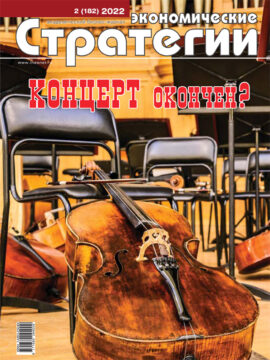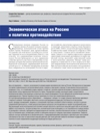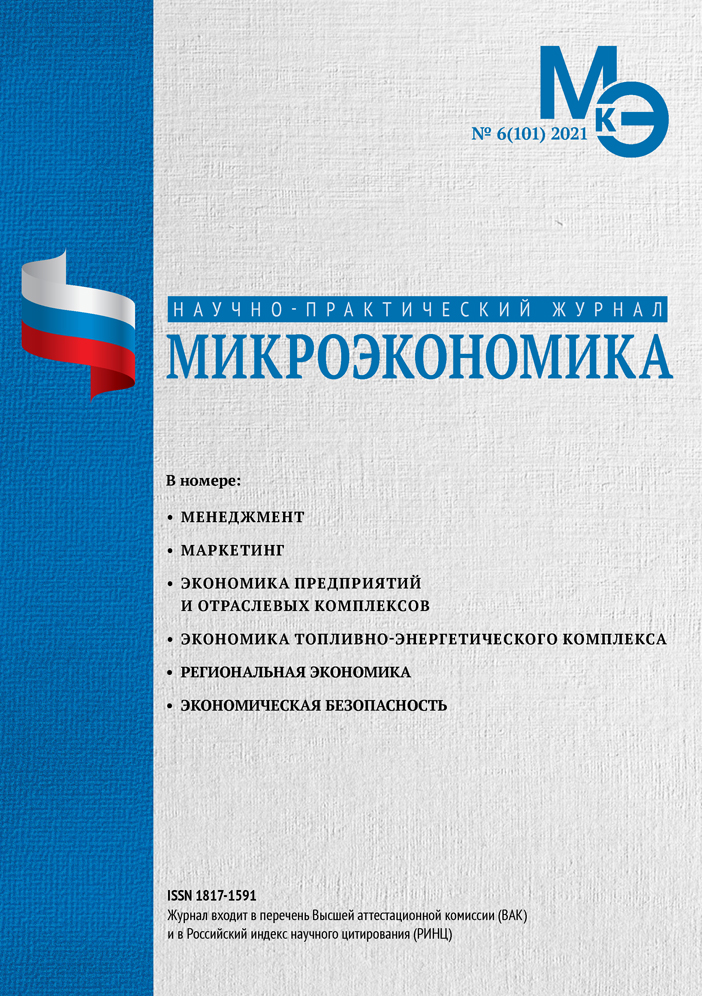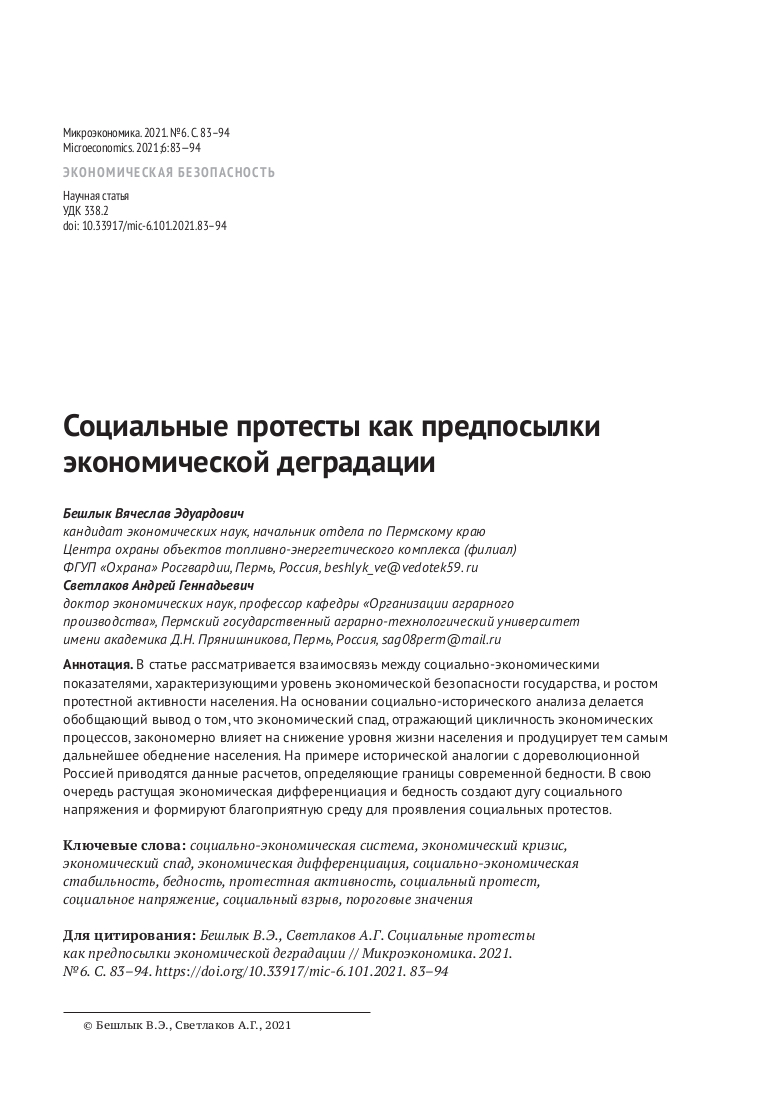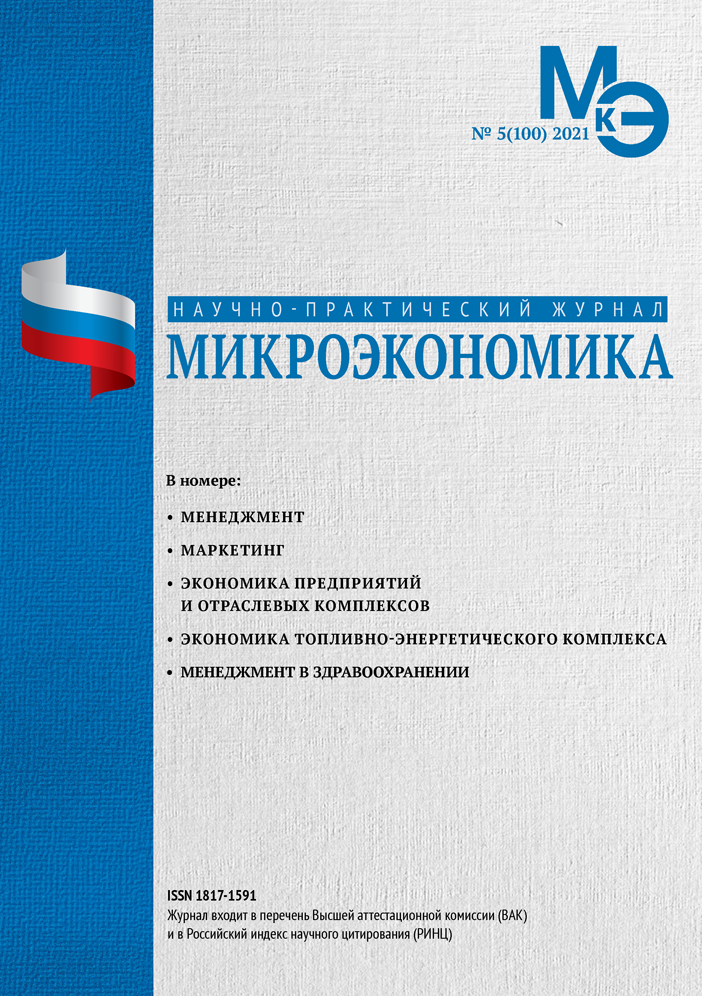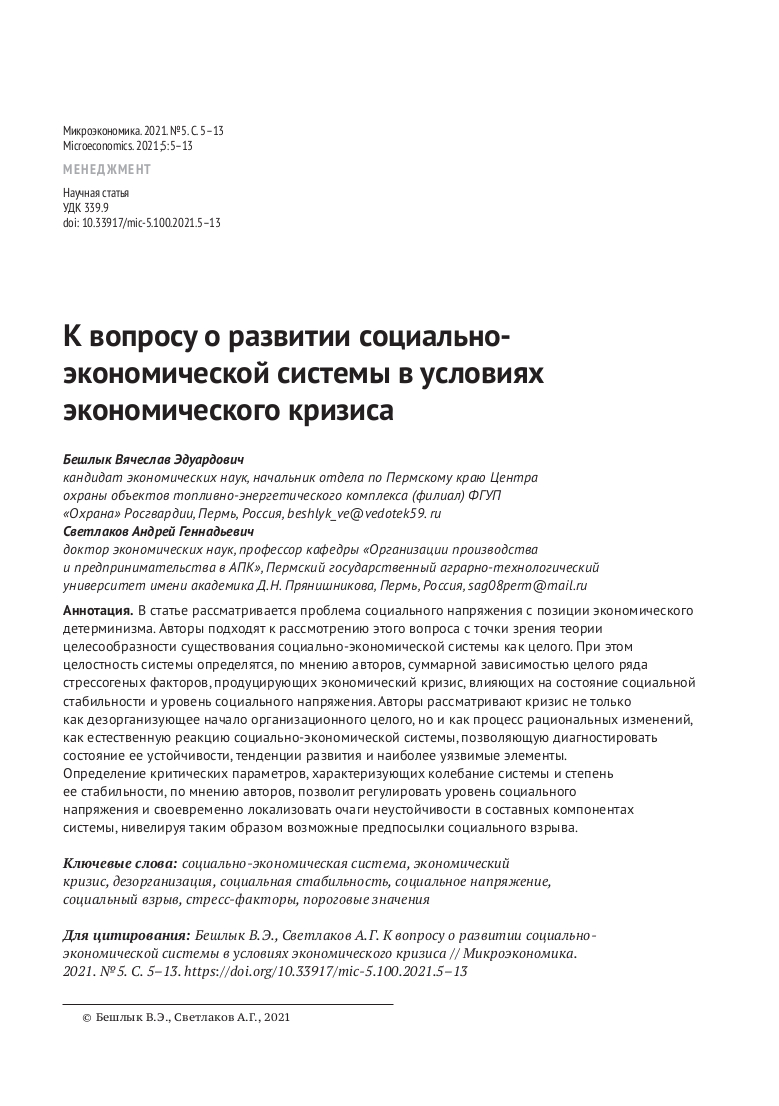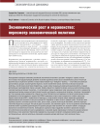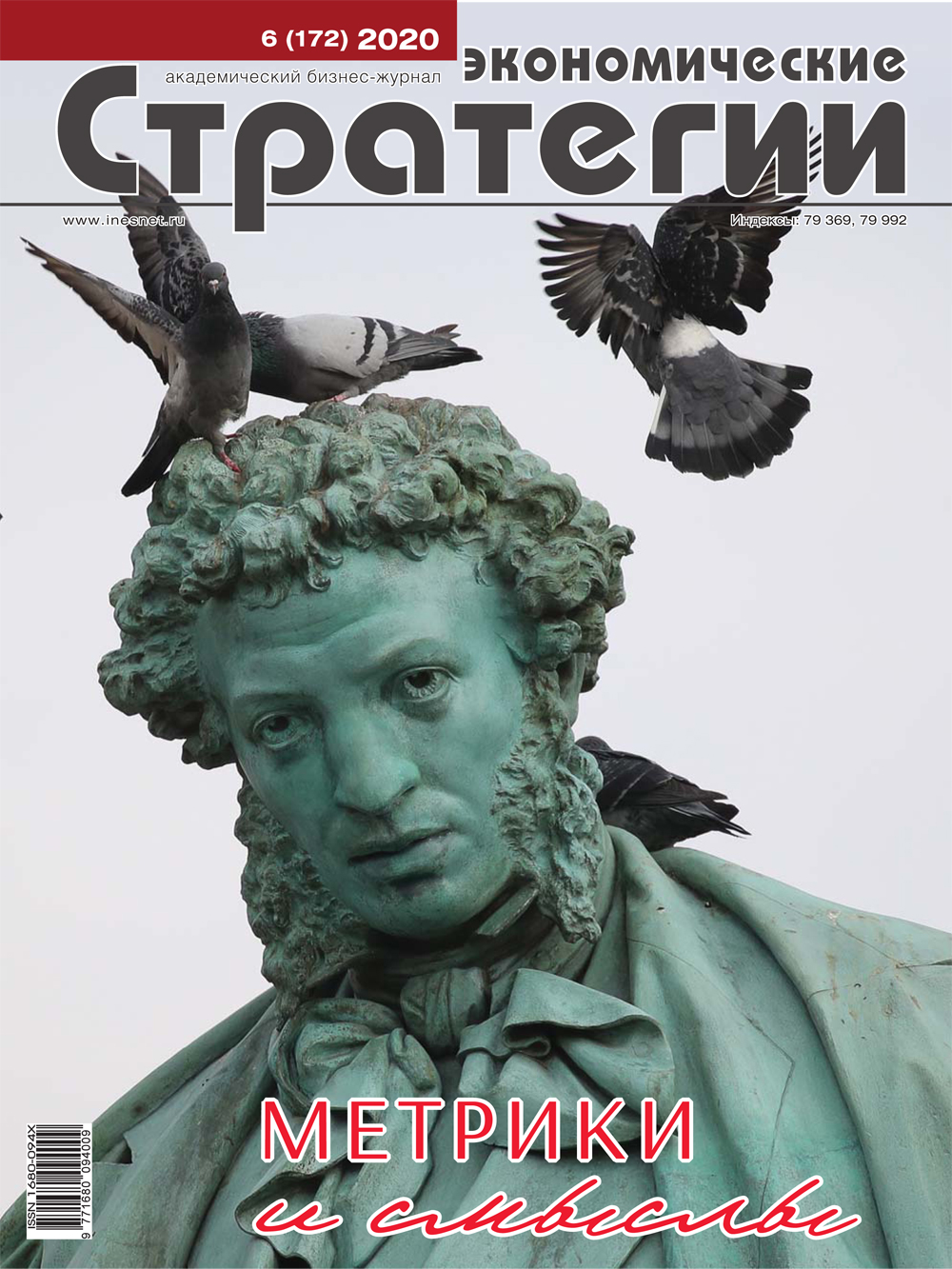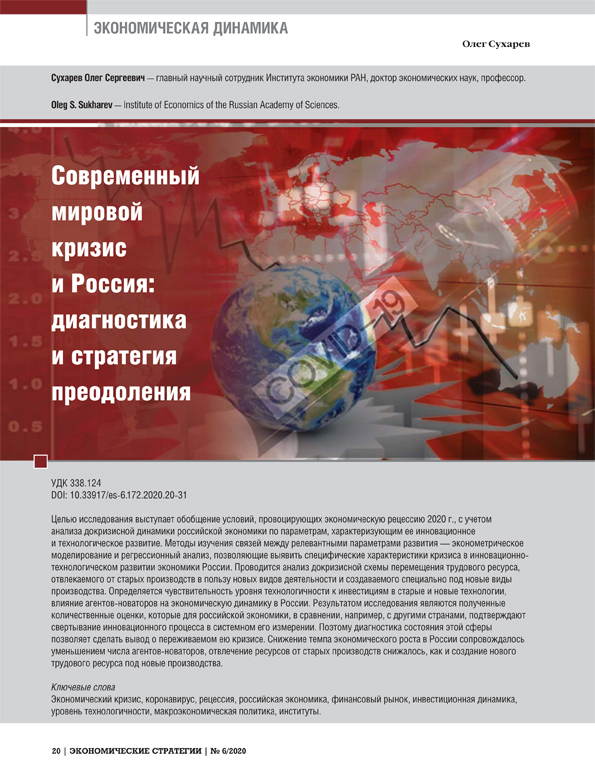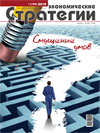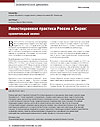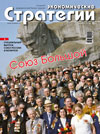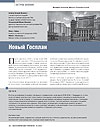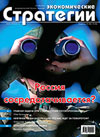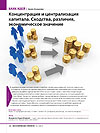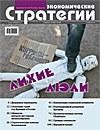The Economic Attack on Russia and the Policy of Counteraction
DOI: https://doi.org/10.33917/es-2.182.2022.40-47
The purpose of the study is to show the patterns of the deployment of an economic attack on Russia. The research methodology is a comparative and retrospective analysis, elements of a structural approach. In the course of the analysis, a result was obtained that boils down to the fact that the current model of the world economy with a high level of integration and dependence of the economy poses a threat to the national security of the country. Economic warfare is carried out through damaging sanctions. Good conditions for it were created by the liberal economic policy pursued in Russia, which held back growth. Moreover, such outcomes are typical not only for economic activity, but also for the functioning of science and education — “invisible” sanctions, which creates a long-term perspective of dependent and driven development. It is necessary to ensure control over the distribution of property owners in the domestic market, planning procedures that are reduced to the establishment of thresholds in the field of imports, exports in various areas of activity, as well as the admission of foreign resources and institutional rules to the domestic market. With the implementation of such an institutional policy, sanctions would cause much less damage or their negative effect would be absent. Today, it is necessary to resist the economic attack by maximizing the withdrawal of assets from the dollar denomination, pursuing an anti-devaluation policy, cutting off the banking system from the speculative depreciation game, and intensifying efforts to replace imports in each industry. It is required to close the contours of production to the domestic market with the re-profiling of production, practicing the seizure of foreign property as a response to similar external actions. Such actions require a systematic state policy in all areas of coordination of industries and activities.
Источники:
1. Glaz’ev S.Yu. Bitva za lide rstvo v XXI veke. Rossiya, SShA, Kitai. Sem’ variantov blizhaishego budushchego [The Battle for Leadership in the XXI Century. Russia, USA, China. Seven Options for the Near Future]. Moscow, Knizhnyi mir, 2017, 352 p.
2. L’vov D.S. Ekonomika razvitiya [Development Economics]. Moscow, Ekzamen, 2002, 512 p.
3. Sukharev O.S. “Izvrashchennyi monetarism” budet diktovat’ ekonomicheskuyu strategiyu razvitiya Rossii? [“Perverted Monetarism” will Dictate the Economic Development Strategy of Russia?]. Investitsii v Rossii, 2017, no 6, pp. 27–35.
4. Krugman P. Depressii — eto nechto inoe [Depression is Something Else]. Ekonomika dlya lyuboznatel’nykh: o chem razmyshlyayut nobelevskie laureaty. Moscow, Izd-vo instituta Gaidara, 2017, pp. 26–27.
5. Sukharev O.S. Ekonomicheskie sanktsii: problema otsenki ushcherba [Economic Sanctions: the Problem of Damage Assessment]. Ekonomika i predprinimatel’stvo, 2017, no 8-4, vol. 11, pp. 80–87.
6. Anchishkin A.I. Prognozirovanie tempov i faktorov ekonomicheskogo rosta [Forecasting Rates and Factors of Economic Growth]. Moscow, Maks-Press, 2003, 300 p.


